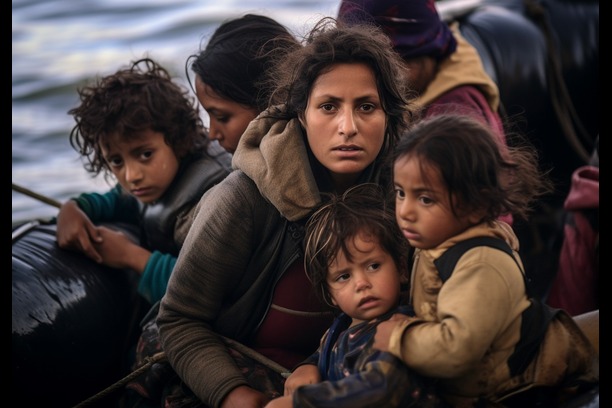

Canada has long been a destination for refugees and asylum seekers fleeing persecution, war, and violence in their home countries. With its strong humanitarian policies and welcoming stance, Canada continues to receive thousands of refugee claims each year. However, recent trends show a rise in challenges, from processing delays to housing shortages.
In this blog, we will explore the latest trends in refugee and asylum claims, the difficulties faced by both claimants and the government, and potential solutions to improve the system.
Before diving into current trends, it's important to understand the distinction between refugees and asylum seekers:
While Canada supports both groups, asylum seekers face more challenges as they go through a legal process to prove their need for protection.
In recent years, Canada has seen a rise in the number of asylum seekers crossing into the country, particularly through irregular border crossings. With global conflicts and economic crises forcing more people to flee their home countries, Canada has received a higher volume of refugee claims than ever before.
The growing number of claims has led to delays in the asylum system. The Immigration and Refugee Board (IRB), responsible for handling refugee claims, has struggled to keep up with the demand, resulting in long wait times for hearings. Some claimants have to wait more than two years for their cases to be processed.
Cities like Toronto and Montreal, where many asylum seekers settle, are experiencing a housing crisis. Shelter spaces are limited, and many refugees struggle to find affordable accommodations. The surge in claimants has placed additional pressure on provincial and municipal governments to provide emergency housing.
Canada has made several changes to its refugee policies in recent years. The Safe Third Country Agreement (STCA) was updated in 2023, limiting the ability of asylum seekers to cross into Canada from the U.S. at unofficial border points. This has impacted how and where people claim asylum.
Canada’s Private Sponsorship of Refugees (PSR) program remains one of the most successful refugee resettlement initiatives. More private groups and organizations are stepping up to sponsor refugees, helping them integrate into Canadian society.
Despite Canada’s commitment to refugee protection, asylum seekers face several hurdles during the process:
Many asylum seekers arrive in Canada hoping for a quick decision, but the reality is often different. Due to high demand, processing times have increased, leaving claimants in limbo for months or even years.
Asylum seekers are eligible to apply for a work permit while waiting for their case to be decided. However, delays in work permit approvals make it difficult for them to support themselves financially.
While refugees receive healthcare coverage under the Interim Federal Health Program (IFHP), accessing services like mental health support, dental care, and prescription medication remains challenging, especially for new arrivals.
Finding affordable housing is one of the biggest challenges for asylum seekers, especially in large cities where rent is high. Many rely on shelters, but spaces are limited.
Many asylum seekers do not speak English or French fluently, making it harder to find jobs and integrate into society. Employment programs exist, but demand is high, and resources are limited.
To better support asylum seekers and improve the system, several steps can be taken:
Canada remains a global leader in refugee resettlement, offering protection to thousands of people fleeing hardship. However, with the increasing number of asylum seekers, the system faces significant challenges. Processing delays, housing shortages, and work permit issues need urgent attention.
By improving efficiency, expanding housing options, and providing better support services, Canada can continue to uphold its commitment to humanitarian protection while ensuring a smooth and fair process for all asylum seekers.
As immigration policies evolve, staying informed and advocating for refugee rights will help create a more inclusive and compassionate society for everyone.
In recent years, Canada has faced growing pressure to control immigration levels due to housing
Canada has become an increasingly attractive destination for remote workers seeking a high quality of
Canada is making significant changes to its work permit policies, directly affecting temporary residents seeking
Having an 'Identity Verified' badge or being 'Identity Verified' simply indicates that an individual has submitted information to complete our identity verification process or we have conducted internal verification using various authorized websites. While this process includes safeguards, it does not guarantee that the person is who they claim to be.
If you encounter any issues with this profile, please report them here. While all consultants who are verified have RCIC ID, we may not have the latest data in terms of their renewal/cancellation/discontinuation of their RCIC ID.
The "Verified Consultants" profiles are created using publicly available information, including data from the IRCC website, official consultant sites, other listing platforms, and social media. Immiperts.com is an independent platform, not affiliated with IRCC or any registered immigration consultants. To update, claim, or remove your profile, please contact us at hello@immiperts.com.
╳